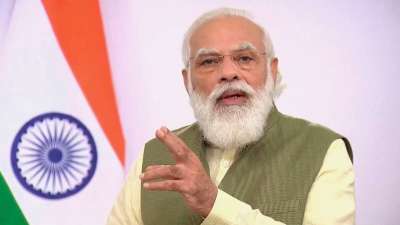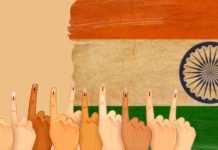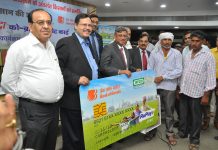Prime Minister is a masterclass in terms of communication. There is a personal, emotive touch in all his speeches which connects with the audience. During the 2013-14 election campaign, he will be traveling to different parts of the country, he will learn the local dialect a bit. Every speech of his will begin with a few sentences in the local language, he will talk about some local poet, shrine, or local heroes, and the emotional connection is instantly established. Even Man Ki Baat’s program adopts the same method, in all the episodes he talks about local heroes, and personalities, of different parts of India making connections with the people.
This way the method of communication becomes very effective. Mr. Modi took to this alternative way of communicating with people because he has experienced a very hostile media in the past, that was toppled upon him during the year 2002 riots. There was a very concerted and biased manner the media was out to attack him. It was not always based on facts. The common Indian who is not aware of the fact will surely go by face value. There was an elaborate narrative which was created. Many of them were contracting with each other. So Modi, since then has had a very antagonistic relationship with the media, which was not helping.
There was a very big incident that took place between the time of the 2002 riots and the Gujarat election. In the terrorist attack on Akshardham where several people died, the terrorists were eventually jotted down. The attack on Akshardham, Gandhinagar, did not trigger any riots. There were no incidents of violence. At that time, Mr. Modi went on door darshan and appealed for calmness, which had an impact. Surprisingly, this narrative is not published anywhere in the picture. People jump from February 2002 to December 2002. In September, in between times, such a major event occurred, but it was completely uneventful. This incident proves how the media and the political parties then wanted to portray this in a banner by creating a particular narrative around him. The media was so hostile against him at that period.
Hence it became very important for him to find other alternative avenues for communicating. This is when social media comes in. Platforms like blogs, social media, and live streams, were prominent. He was very committed and persistent in his work and intentions, so she found alternative ways to communicate.
Going back to his organising days, he was always about engaging at the grassroots. In the very initial times when he was contesting in the Ahemafabad municipal elections, he would go to households, and in the afternoons he would engage with housewives and get them involved in the municipal campaign. Then for the first time, the BJP win the municipal elections.
There was a process of change in media during 2009. The concept of blogging made an appearance on the political trail. That was not the entitled election for the BJP to make a difference but it was the beginning. These media helped them to engage with people and connect with people more and more. The Radiant Media Team helped a lot in undermining and destroying the monopoly of the traditional and prime-time media houses. The primetime media and their anchors were completely biased and far from neutrality. Social media coming in, confirmed the idea of engaging with people, and getting connected with people.
Narendra Modi, spoke a different language from the other prominent BJP giants did not speak. He spoke the language which was appealing to the youth at that time. The youth at the time were from an uncertain mindset, the unstable coalition government. Then Narendra Modi as a leader was talking about minimum government, getting the government out of business, technology, innovation, and entrepreneurship. These were the topics that the generation could relate to. He was the first politician then talk about minimum government – maximum governance. The reflections on these topics appear in his speeches quite consistently. Facets like entrepreneurship, and the limited role of the government were the new rhetoric, that was unheard of and appealed to the generation. Hence this generation got involved in the digital campaign of 2013-14.
One section of the critics complains that the communication of the BJP is excessively overboard when it comes to success and achievements. In this digital era, where the attention span is so small, there is so much information out there, the timelines are crowding up with so many things, to give the message across one has to over-communicate.
The ways and patterns of accumulating and transporting information and communication from the team of Modi have evolved with time. From managing digital media presence to live to stream, then growing into India 272, then MyGov, and then after he became the prime minister there is the Modi AAP which has become the focal point of lots of communication. The most striking part of it is he communicated in a multilingual manner, be it in his speeches, short videos or for example Man ki Baat. There are more than 40 languages, 11 foreign languages, and the Man ki Baat is relayed. It is the magic of the advanced, developed machinery, that does the translation flawlessly within the time frame of 24 hours.
Modi had deployed from the year 2014 a team of people in his internal communication media to the people who completely lacked any political connections or affiliations, most of them were foreign returnees and were incorporated into Team Modi. The digital era has made press conferences redundant. In the past press conferences were needed because there were no other avenues to respond, react or connect with the people on various things. In the present times, due to social media, one is on trial every second. Now the parties and the government are over-communicating because it is reacting to the questions that are coming up all the time. If the prime minister is not responding, the entire machinery is responding. So there is no need for press conferences as it was held in the past. What the media and the people want is the adversarial, and malicious effect.
In man ki baat, the purpose of it is very large-sighted. In the adversarial school of thought of media, all the grievance, misery, and complaints, are focused on, and the prime minister tends to focus on the positive parts of the society. The Western or global media is largely influenced by the narrative of the media depicted in Delhi. But India is not limited to Delhi, our country is far more diverse, both geographically, linguistically and culturally with very wide socio-economic disparities. The length, breadth, complexity and diversity have to be understood. Man ki baat as a communication platform is a very good metaphor for understanding those aspects of India. The prime minister talks about various issues or matters, like cleanliness, water conservation, going cashless, going plastic- and startups, these are the topics which are not just about one particular city or place. The program is about the people and their life-changing stories across India. He talks about various languages, cultures, festivals, and traditions linking them to the initiatives, and the changes that he is championing.
The gross purpose behind this is behavioural change on a mass scale is not possible to dictate. People will not accept the changes only through initiatives, government schemes, or communication, it requires people’s participation at the grassroots level. These participants will make this their mission and they inspire others which makes a multiplier effect. The spirit of inclusion and diversity is reflected through the stories being told in the man ki baat. The thread of commonness is the factors which bind the cultural and social diversity, finding commonness in the country. The prime minister finds a positive aspect of diversity in India and tries to connect through the common ground and make a change. Indian developmental.projects are not done in an authoritative, dictatorial way but with positivity, participation of people, and grievance to bring heard. The road to the development in India is not smooth, but the prime minister has taken it with a positive direction and achieved an immense success by connecting with people, interacting with the mass, taking the contemporary social media in a youthful manner to get into the minds of the young India.
|
ReplyForward |




















